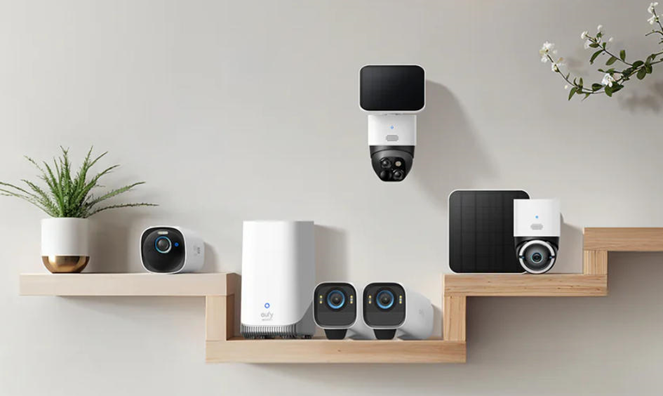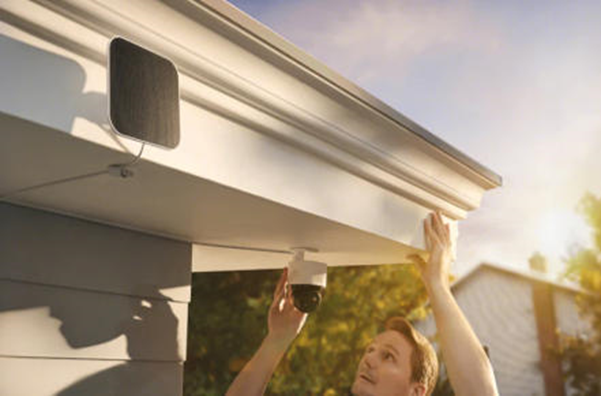Outdoor cameras are powerful tools for protecting your home, but their effectiveness heavily depends on placement. Installing them in the right locations ensures wider coverage, better image quality, and more accurate detection. Before mounting your camera, it’s important to assess your property layout and security needs. This guide will walk you through strategic installation techniques to maximize your camera’s performance and deliver the best protection for your home.

Factors to Consider Before Installation
Field of View and Coverage Area
The camera’s field of view dictates how much ground it can monitor. A wide-angle lens offers broader coverage, which can reduce the number of cameras needed. Prioritize spots where you can see entry points, paths, or high-traffic areas. Be sure to align the lens with the desired view range. Choosing the right position ensures you’re getting the most visual information with the least equipment.
Elevation and Angle of Installation
Installing your outdoor camera at the proper height is key to capturing usable footage. Too high, and facial recognition becomes difficult; too low, and the device risks tampering. Ideally, mount the camera between 8–10 feet off the ground. Tilt it slightly downward to record facial details and ground activity. This angle also helps avoid sun glare or light reflection that may interfere with image clarity.
Obstructions and Blind Spots
When planning your camera placement, watch out for anything that may block the view—like overhanging branches, poles, or structural beams. Blind spots reduce the surveillance area, leaving you vulnerable. Conduct a visual sweep of the location to identify potential obstacles and adjust placement accordingly. Regularly reassess the view as seasons change and vegetation grows to keep your camera’s visibility intact.
Best Locations for Installing an Outdoor Camera
Front Door and Entryways
The front door is the most commonly used entrance—and often targeted by criminals. Position a camera here to monitor deliveries, visitors, and suspicious activity. Angle it to clearly capture full-body images and faces. Cameras with wide dynamic range or HDR can balance lighting at bright or shadowed doorways. This placement also helps deter porch piracy and provides evidence in case of incidents.
Backyards and Side Gates
These lesser-monitored areas often serve as entry points for intruders. Installing a camera here strengthens overall coverage and reduces vulnerability. Choose models with weatherproof housing and night vision to ensure consistent performance, even in dark or damp conditions. Monitoring your backyard also helps keep an eye on pets, kids, or storage sheds with valuable equipment, adding security without compromising convenience.

Driveways and Garage Areas
Driveways and garages are common access points for both residents and intruders. A well-positioned camera here captures the movement of vehicles and individuals near your home. This is especially useful for tracking unknown arrivals or missed deliveries. Look for models with motion detection and license plate clarity to record important events. Installing lights nearby can improve nighttime footage and overall deterrence.
How to Avoid Common Installation Mistakes
Installing Cameras Too High or Low
Incorrect mounting height compromises image quality and camera protection. Too high, and you’ll miss crucial facial details; too low, and your camera is more susceptible to tampering. Test the angle after setup to ensure full coverage of the intended area. Correct positioning boosts identification potential and deters physical interference effectively.
Poor Camera Placement Leading to False Alarms
Placing your camera where there’s frequent non-threatening motion—like moving branches or traffic—can trigger false alerts. This reduces the credibility of warnings and leads to alert fatigue. Avoid pointing cameras at busy streets or areas with reflective surfaces. Use motion detection zones and sensitivity adjustments to focus on critical spots, improving the reliability and relevance of each notification.
Not Protecting Your Camera from the Elements
Outdoor cameras face weather extremes, and without proper shielding, their function may degrade. Install them under awnings, eaves, or camera hoods for added protection from rain, sun, and wind. Even weather-resistant models benefit from extra coverage. Check for water accumulation, dust buildup, or seal damage periodically. Proper environmental protection extends hardware life and keeps footage clear and dependable.
Tips for Maximizing Camera Performance After Installation
Adjusting Camera Settings for Optimal Use
Fine-tuning your settings post-installation is key to maximizing performance. Set your resolution to the highest practical level your storage supports. Define motion detection zones to avoid capturing irrelevant movement. Tweak notifications to align with your routine. Schedule firmware updates or enable auto-updates to keep software current. These settings tailor the system to your needs, improving usability and efficiency.
Ensuring a Stable Power Source
Cameras rely on consistent power for uninterrupted security. For wired models, ensure connections are stable and safeguarded against wear. Use surge protectors or backup systems like UPS for extra reliability. For wireless units, monitor battery health regularly and keep spare batteries on hand. If solar-powered, confirm the panel receives ample light. Stable power directly influences your camera’s ability to protect your home without interruption.
Regularly Checking for Obstructions or Damage
Over time, obstructions such as growing plants or newly placed furniture can block your camera’s view. Make it a habit to check your system weekly for visual obstructions and physical wear. Look for lens smudges, insect nests, or signs of tampering. Cleaning the camera and maintaining its field of view keeps performance consistent and your recorded footage dependable when you need it most.
Conclusion
Strategic placement plays a vital role in the success of any outdoor camera system. Understanding your field of view, avoiding blind spots, and positioning your device at the right angle all contribute to better surveillance. Combine smart installation with consistent maintenance to prevent common issues and extend your system’s reliability. With thoughtful setup and regular attention, your outdoor cameras will deliver lasting protection and greater peace of mind.
